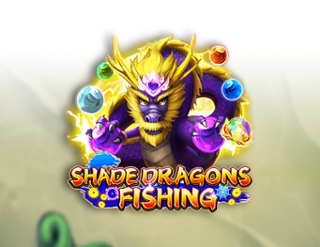Transform your poker game by shifting your mindset—embrace growth, learn from mistakes, and level up your skills for long-term success.
Shifting from a fixed mindset to a growth mindset doesn’t happen overnight. It requires intentional effort, a willingness to challenge your current beliefs, and a commitment to learning. MayaGame’s approach can help you build this mindset with actionable steps to implement at the poker table.
1. Reframe Mistakes as Opportunities to Learn
The main difference between fixed and growth mindset players is how they handle mistakes. Fixed mindset players see mistakes as proof they’re not cut out for poker, while growth mindset players view them as opportunities for growth.
For example:
- Fixed Mindset: “I always make mistakes on the river; I must be bad at poker.”
- Growth Mindset: “I made some poor decisions on the river. Let’s review those hands and learn from them.”
Action Steps:
- Adopt the “What Can I Learn?” Approach: After each session, pick a hand where you made a mistake and ask yourself what you could have done differently.
- Keep a Poker Improvement Journal: Document your mistakes and learnings. Over time, you’ll notice patterns and areas to improve.
- Detach Emotion from Mistakes: Understand that mistakes are part of the learning process and not a reflection of your worth.
2. Focus on the Process, Not the Results
Poker is a marathon, not a sprint. A growth mindset player focuses on consistently making the best decisions rather than fixating on short-term results.
Example:
- Fixed Mindset: “I lost money today; I must have played badly.”
- Growth Mindset: “Did I make solid decisions today? If yes, the results don’t matter in the short run.”
Action Steps:
- Set Performance-Based Goals: Instead of saying “I want to win $500 this week,” aim for “I will focus on playing my best poker, regardless of the results.”
- Track Decision Quality, Not Just Profits: After a session, assess how well you stuck to your strategy and maintained focus, not just whether you won or lost.
- Celebrate Small Wins: Recognize and celebrate incremental improvements, like making a disciplined fold you wouldn’t have made before.
3. Challenge Yourself to Improve
Growth thrives outside your comfort zone. If you avoid tough study material or only play easy games, you’re limiting your development. A growth mindset thrives on challenges.
Example:
- Fixed Mindset: “I’ll never understand solvers; they’re too complicated.”
- Growth Mindset: “I don’t understand solvers yet, but with time and effort, I can learn.”
Action Steps:
- Create a Structured Study Plan: Focus on one area of your game each week (e.g., c-betting, check-raising, or bluff catching) and study it in-depth.
- Play in Tougher Lineups: While game selection is key, playing in more difficult games pushes you to adapt and improve.
- Use the “Yet” Technique: Instead of saying, “I can’t do this,” reframe it as “I can’t do this yet.”
4. Manage Tilt with a Growth Mindset
Tilt often arises from a fixed mindset reaction to variance. When you view bad beats or coolers as signs that you’re “unlucky” or “cursed,” it’s hard to stay calm and focused. A growth mindset allows you to accept variance and stay focused on playing your best poker.
Example:
- Fixed Mindset: “I always get rivered; this game is rigged.”
- Growth Mindset: “Variance is part of the game, and I made the right play. I can’t control the outcome, but I can control my strategy.”
Action Steps:
- Reframe Negative Thoughts: Instead of saying, “I can’t believe I lost that hand,” reframe it to “I made the best decision with the information I had.”
- Use a Tilt Trigger Journal: Track your emotional triggers and prepare strategies to deal with them.
- Practice the 6-2-7 Breathing Technique: Deep breathing (inhale for 6 seconds, hold for 2 seconds, exhale for 7 seconds) can help you calm down quickly when tilted.
5. Surround Yourself with Growth-Oriented Players
The people you spend time with influence your mindset. If you hang out with players who focus on bad beats and luck, it will be harder to maintain a growth mindset. Instead, surround yourself with players who are committed to improving.
Action Steps:
- Join a Poker Study Group: Find or create a community of like-minded players who are focused on learning and growth.
- Consume the Right Content: Follow poker coaches and players who emphasize skill development, mental toughness, and continuous improvement.
- Be Open to Feedback: Instead of getting defensive when receiving critique, ask yourself, “How can I use this feedback to become better?”
Your Mindset Shapes Your Poker Future
Poker is a game of skill, strategy, and mental resilience. While knowledge of poker strategies is important, your mindset ultimately determines how far you’ll go. If you’re stuck in a fixed mindset, you might struggle with mistakes and setbacks, limiting your progress.
But if you embrace a growth mindset, you’ll open the door to ongoing learning, improvement, and long-term success. The best players aren’t those who avoid struggles—they’re the ones who learn from their mistakes, focus on making solid decisions, and push themselves to grow.
With a growth mindset, you’ll be able to handle variance better, improve your game continuously, and develop the mental toughness you need to thrive in the long run.















